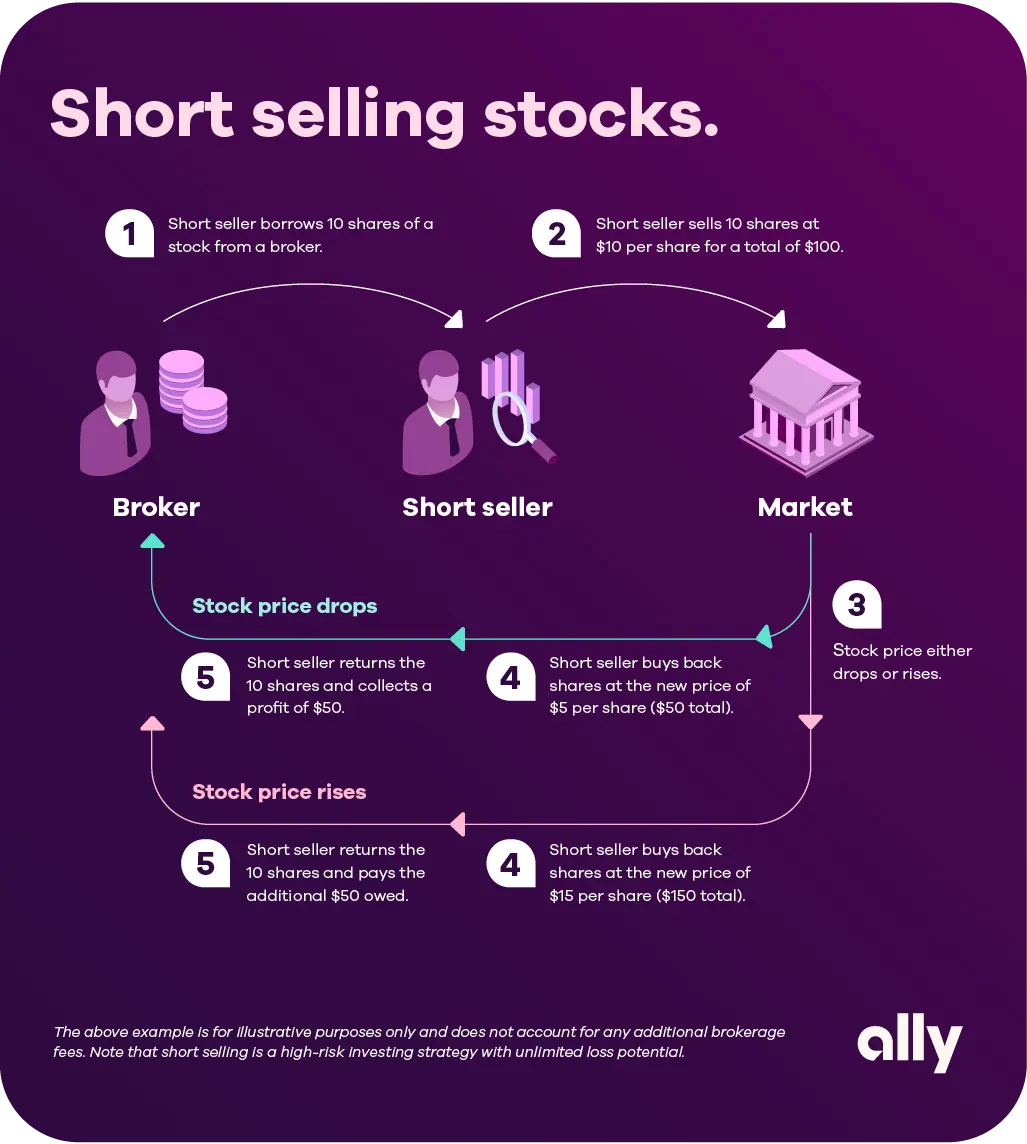Have you always been a long-term investor but want to try something new? If you’re considering short selling, there's one word that’s most important before you start: education. It's important to really understand short selling before you dive in.
What is short selling?
Short selling flips the typical investing pattern of buy low, sell high and involves selling borrowed stock, instead of what you already own.
Here’s a basic overview: You must have a margin account with a brokerage firm, which allows you to use your own securities as collateral to borrow shares. Next, you sell the borrowed shares, which leaves you with a negative share balance (in a “short position”). Later, you’ll buy back the stock at — hopefully — the lower price to make a profit on the difference. In the case of rising stock, however, you might have to buy back the security at a higher price and accept a loss.
With short selling, the potential profit is limited to the value of the stock, but the potential loss is unlimited, which is one of the major risks of short selling.

What are the main risks of short selling?
When you short common stock, you face several different kinds of risk. Let’s walk through the series of risks you should know before you consider selling stock short.
1. Market risk
Because there is no limit on how high a stock can go, the market risk you face as a short seller is potentially unlimited.
2. Dividend risk
When you borrow shares and short them, the lending broker should get any dividends that the issuer pays on the shares that were lent by the broker. As the short seller, you’re responsible for payments if you’re short the stock at market close on the day before the ex-date. This reimburses the brokerage for the dividends that it would have received.
3. Short squeeze risk
Short squeezes can work against short sellers. A short squeeze occurs when many traders short a stock (assume that the stock price will go down) but the stock price goes up instead. One of the most famous short squeezes of all time occurred with GameStop Corporation’s (NYSE: GME) in early 2021, when retail investors surged GameStop’s stock price more than 1,600% in about fifteen days.
4. Regulatory risk
Regulators may ban short sales in a particular sector and in the market in general. This can cause a sudden spike in stock prices, which forces the short seller to cover short positions and incur huge losses.
Does short selling have unlimited risk?
Yes. You could lose unlimited money on a short sale because the value of any asset can climb to infinite amounts.
What are the costs of short selling?
You’ll pay trading commissions, also called stock trading fees, when you buy or sell stocks. You’ll also pay a “hard-to-borrow” fee, an annualized fee based on the value of a short position and the hard-to-borrow rate for that position. This fee varies daily and can be significant.
What are the requirements for short selling?
Before you short sell, you’ll need to meet the margin requirements. The Federal Reserve Board requires all short sale accounts to have 150% of the value of the short sale when the sale is initiated.
When does short selling make sense?
Short selling is not a strategy many investors use, largely because the expectation is that stocks will rise in value over time. For the typical investor with a long-term investment horizon, buying stocks is a less risky proposition. Short selling may only make sense for advanced investors who understand the risks associated with short selling should attempt it.
The most obvious benefit of short selling is the potential to generate a profit without putting much money up front. However, timing is crucial, so you don’t encounter a decline. Entering too early or too late can cause infinite losses.
Here are a few example situations in which short selling might be employed:
During a bear market
When market fundamentals worsen
When technical indicators predict a bearish trend
When the valuation reaches elevated levels
Consider short selling carefully
Short sellers use shorting to express a view that a security is overvalued or to hedge against risk. It’s important to recognize that the more shares go up, the more potential for loss because you’ll need to return your lent shares, and you may be forced to buy them back at a higher price.
Losses can be infinite since there’s no limit to how high a share price can go, so carefully assess your risk appetite when considering this investing tactic.



